How To Optimize Spring Grazing On A Regenerative Ranch
Have a plan with options, observe closely, and be ready to adjust as needed.
Achieving ideal timing to maximize spring grazing may feel as tedious as Goldilocks’ pursuit of the perfect porridge.
Turn livestock out too soon, and you’re liable to damage future growth. Wait too long, and you risk missing the most productive opportunity of the season.
Getting it just right, Noble Research Institute Ranch Facility Manager Curt Larson says, depends on keen observation, flexibility and responsiveness to your environment.
Larson manages the Oswalt Ranch in south-central Oklahoma. In the decade and a half he’s been there, he has seen and experimented with about every approach to spring grazing.
“We’ve had to change our mentality over the years,” Larson says, pointing back to the days when they would bring in stocker calves, hold them for 45 days on hay until spring green-up arrived, then turn them out to a planted winter-wheat pasture.
The traditional one-steer-per-acre stocking rate usually held true as a regional rule of thumb.
“When cool-season grasses were gone, we would gather and go on to native pastures, then wait for the next warm-season crop of annual grasses to emerge,” Larson says.
“Often, either the grass would get ahead of the cattle, or the cattle would get ahead of the grass, one of the two.”
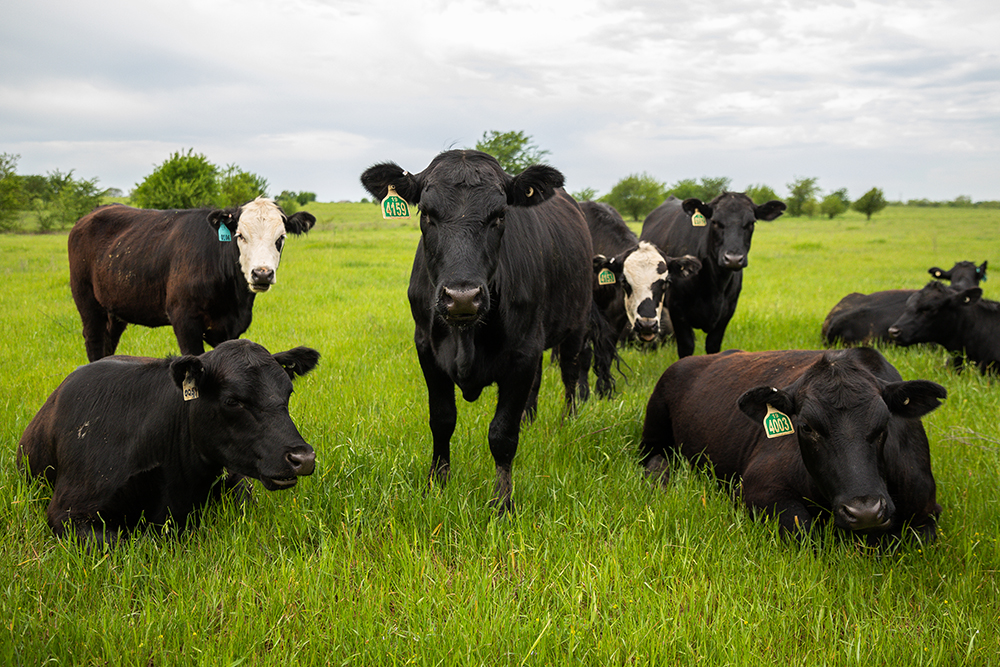
Observe Closely For Best Resource Management
Today, the Oswalt Ranch team puts their emphasis on environmental observation, diversity and measuring forage availability for more-exact grazing plans. In October, they plant a cool-season combination of winter wheat, rye, clover and/or vetch and then start buying stocker calves in November or December.
Ideally, they will save warm-season native grasses from the previous summer to graze as winter forage, offering a holdover until air and soil temperatures start to warm. Larson starts monitoring forage availability on the cool-season planted pastures as soon as green emerges, using a forage stick to measure availability and calculate carrying capacity accordingly.
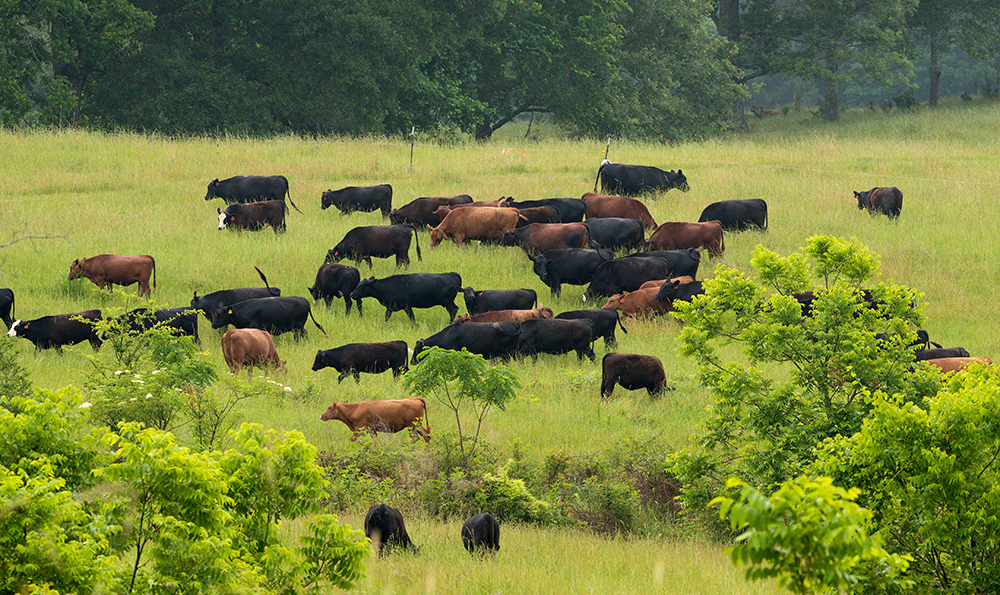
Consider Small Paddocks For Rapid Rotation
In one pasture test plot, Larson and Frank Rhoades, ranch facility assistant at Oswalt, have a 160-acre square split into 5-acre grazing paddocks or traps. The grazing plan typically calls for one day of grazing on each paddock. They set up temporary polywire fencing a couple of moves ahead to guide the animals through the rapid rotation. Depending on rainfall and green growth, that rotation might be sped up or slowed down.
Ideally, he keeps animals moving at a pace that allows them to take only one bite of a plant and leave enough leaf structure to continue photosynthesis and rapid growth. With 32 paddocks in the 160-acre pasture, each paddock gets at least 30 days of rest and regeneration.
“By the time we go through the system once, we’re back on top of the prime growth, ready for a second cycle through it,” Larson says.
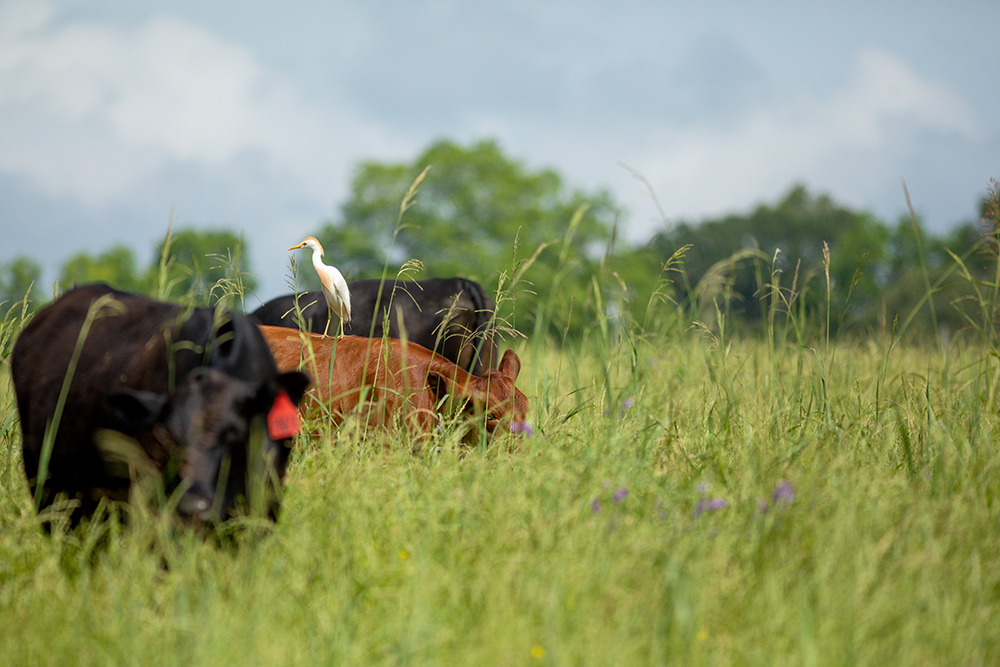
Match Forage Seeding, Grazing With Soil Health Needs
While the animals make their way through the first-growth graze, Larson pulls samples for a Haney soil test. He works with soil scientists to determine the most advantageous cropping mix for warm-season grasses based on what the soil may be deficient in or carry in excess, just as he does in the fall to determine the cool-season planting combination.
“I’m not against using some kind of natural fertilizer if you need to get these spring pastures back in shape,” Larson says. “But what we’ve found is that you can do the same thing by selecting different legumes or plants in that cool-season mix.”
Warm-season planting mixes often contain 15 or 20 species for a variety of soil responses. After livestock make a second pass through a cool-season paddock, he’s immediately on the no-till drill to seed the chosen mix into standing forage and residue. This time, he leaves the fence down behind the cattle, giving them a chance to backtrack over freshly seeded ground.
“I call it ‘treading it in,’” Larson says. “You get that hoof action, plus fresh manure and nutrients from the animals, and we sure find a stronger germination response with that.”
After two or three days, the back fence line is closed so hoof action doesn’t damage germinating seeds. Once again, by the time the herd makes it through another 30-day rotation, it returns to a fresh stand of warm-season crops ready for summer grazing.
“This whole idea is about hitting it and hitting it quick. So we move fast, give it plenty of time to rest, always keep those animals on the freshest nutrition, always have something fresh to roll back onto,” Larson says.
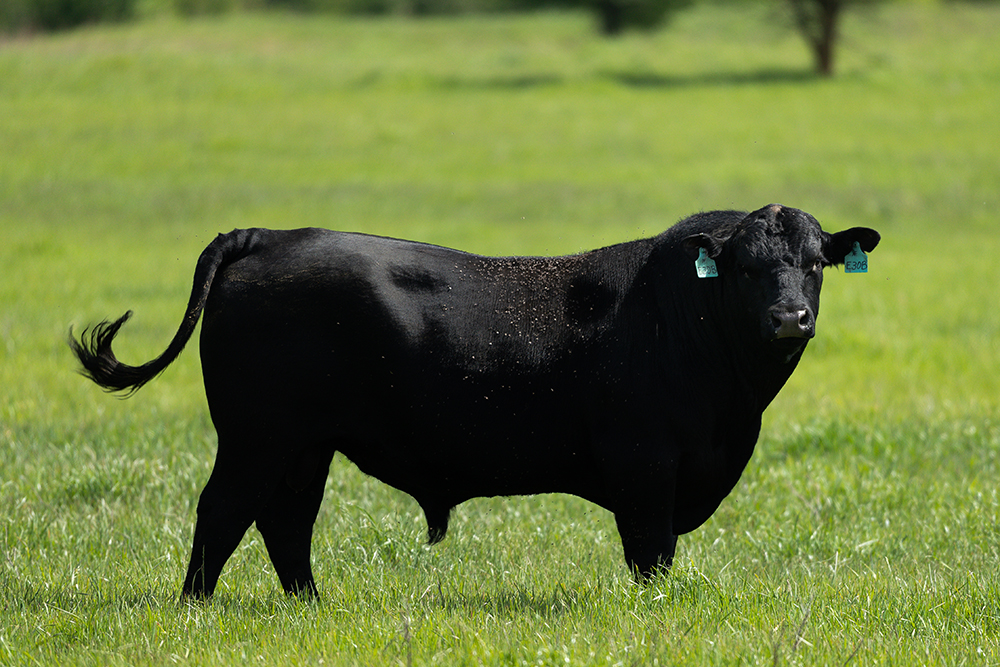
Have a Plan, But Be Ready to Pivot
The grazing plan for the ranch is set well in advance, but it’s flexible enough to adjust for the moisture and growth available.
“If I see those winter annuals slowing down, we’re not getting the moisture, I’ll kick them onto my stockpiled native pasture to give it a chance to catch up,” he says. “If my winter annuals are going big, I know I can stockpile that native pasture for the next winter.”
These management decisions vary greatly depending on region, climate and forage availability, but the same principles can be applied to all environments.
“The main thing is to just observe your grass. Do your clippings and weigh the forage, and know what you’ve got,” Larson says. “Try to give yourself as many options as possible. The more diversity you can give yourself, the better off you are.”


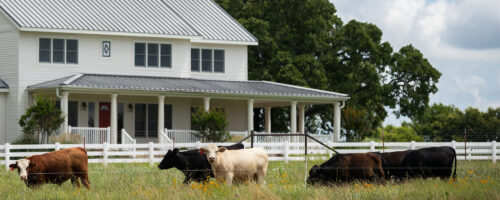
Comment